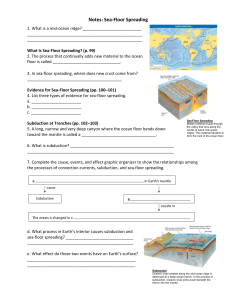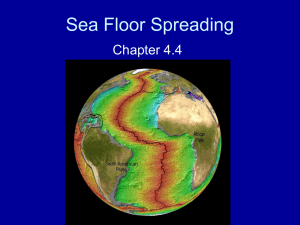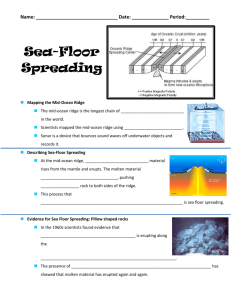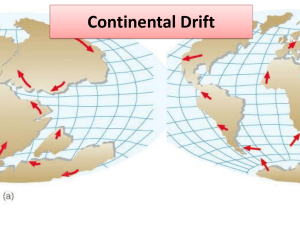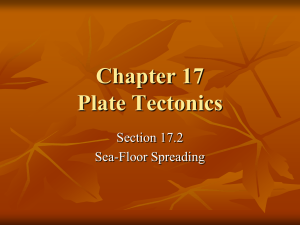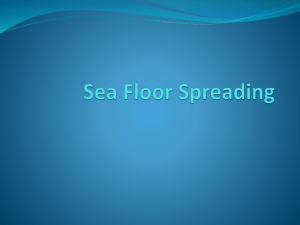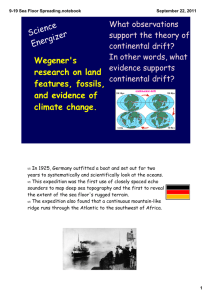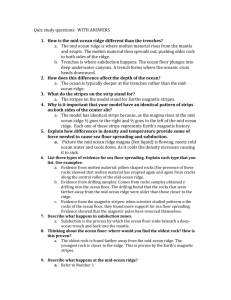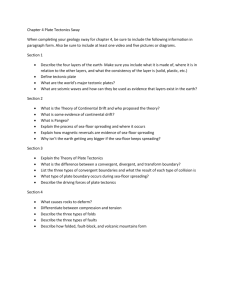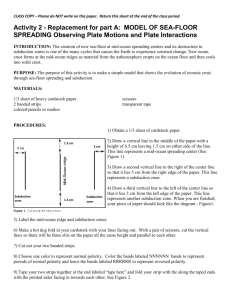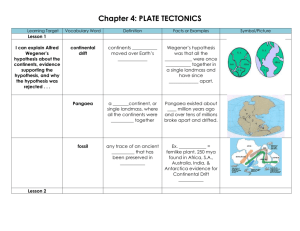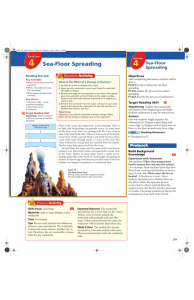Ch1S4: Sea-Floor Spreading Notes
advertisement
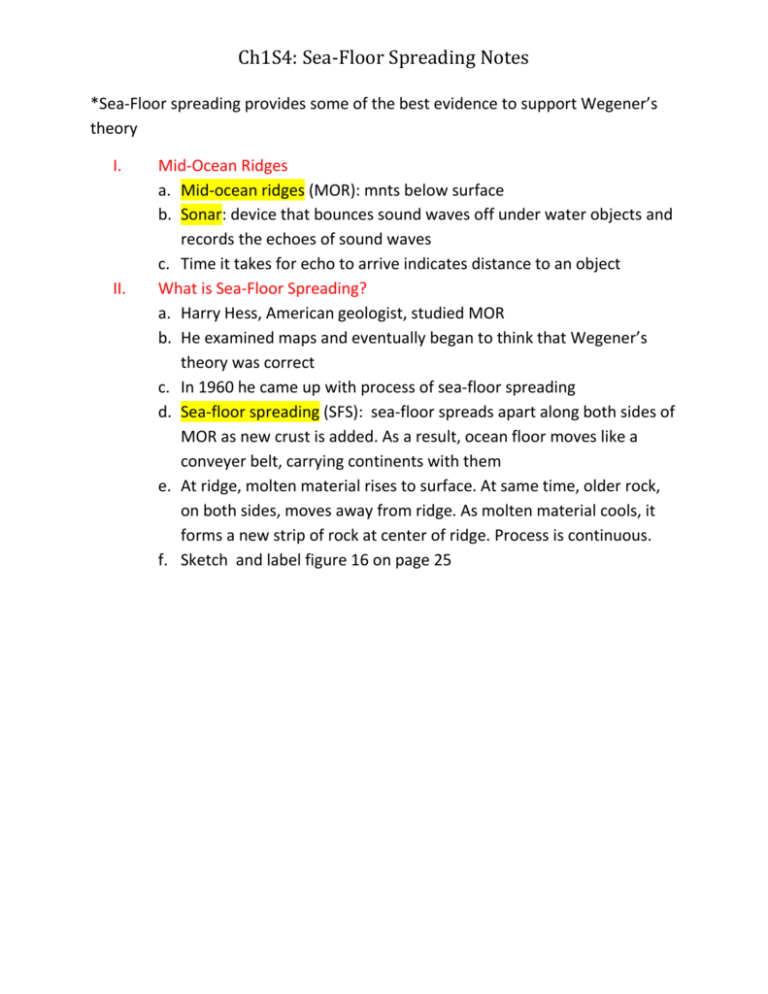
Ch1S4: Sea-Floor Spreading Notes *Sea-Floor spreading provides some of the best evidence to support Wegener’s theory I. II. Mid-Ocean Ridges a. Mid-ocean ridges (MOR): mnts below surface b. Sonar: device that bounces sound waves off under water objects and records the echoes of sound waves c. Time it takes for echo to arrive indicates distance to an object What is Sea-Floor Spreading? a. Harry Hess, American geologist, studied MOR b. He examined maps and eventually began to think that Wegener’s theory was correct c. In 1960 he came up with process of sea-floor spreading d. Sea-floor spreading (SFS): sea-floor spreads apart along both sides of MOR as new crust is added. As a result, ocean floor moves like a conveyer belt, carrying continents with them e. At ridge, molten material rises to surface. At same time, older rock, on both sides, moves away from ridge. As molten material cools, it forms a new strip of rock at center of ridge. Process is continuous. f. Sketch and label figure 16 on page 25 Ch1S4: Sea-Floor Spreading Notes III. Evidence of Sea-Floor Spreading a. Hess’s evidence: eruptions of molten material, magnetic stripes in rock of ocean floor and ages of rocks (caused scientists to look at Wegener’s theory again) b. Evidence from Molten Material i. Scientists used, Alvin, a submarine to investigate ocean floor ii. Discovered rocks shaped like pillows or toothpaste at bottom that showed evidence of molten material erupting at MOR c. Evidence from Magnetic Stripes i. Scientists studied patterns in rocks of ocean floor; this showed that Earth’s poles had reversed over 1,000’s of yrs. ii. Rocks that make up ocean floor have a pattern of magnetized “stripes” iii. Rocks on ocean floor contain iron- rock began as molten material then cooled and hardened, as it cooled, iron bits lined up in direction of Earth’s poles- “magnetic memory” iv. Scientists recorded magnetic memory of rocks with special instruments- they found stripes of rock that formed when Earth’s magnetic field pointed north alternate with stripes that pointed south v. Sketch and label figure 17 on page 26 d. Evidence from Drilling Samples i. 1968, Glomar Challenger, a drilling ship, collected samples of the ocean floor ii. Age of rock was determined iii. Discovered that youngest rocks were always in center of ridgeproved that sea-floor spreading has taken place Ch1S4: Sea-Floor Spreading Notes IV. Subduction at Trenches a. Deep-ocean trenches (DOT): where the ocean floor plunges into deep underwater canyons b. Ocean floor sinks back into mantle at deep ocean trenches c. The Process of Subduction i. Subduction: process by which ocean floor sinks beneath DOT and back into mantle ii. As subduction occurs, crust closer to mid-ocean ridge moves away from ridge and toward deep ocean trench iii. Subduction and sea-floor spreading work together iv. Ex. Conveyer belt v. New oceanic crust is hot, as it moves away from ridge, it cools and becomes more dense vi. Ex. Dry wash cloth floating in tub of water vii. Sketch and label Figure 19 on page 28 viii. Subduction and Earth’s Oceans 1. Subduction and sea-floor spreading can change size and shape of oceans 2. Pacific Ocean is shrinking because the DOT is swallowing more oceanic crust than the mid-ocean ridge can produce 3. Atlantic Ocean is expanding because its ocean floor is spreading and has nowhere to go
